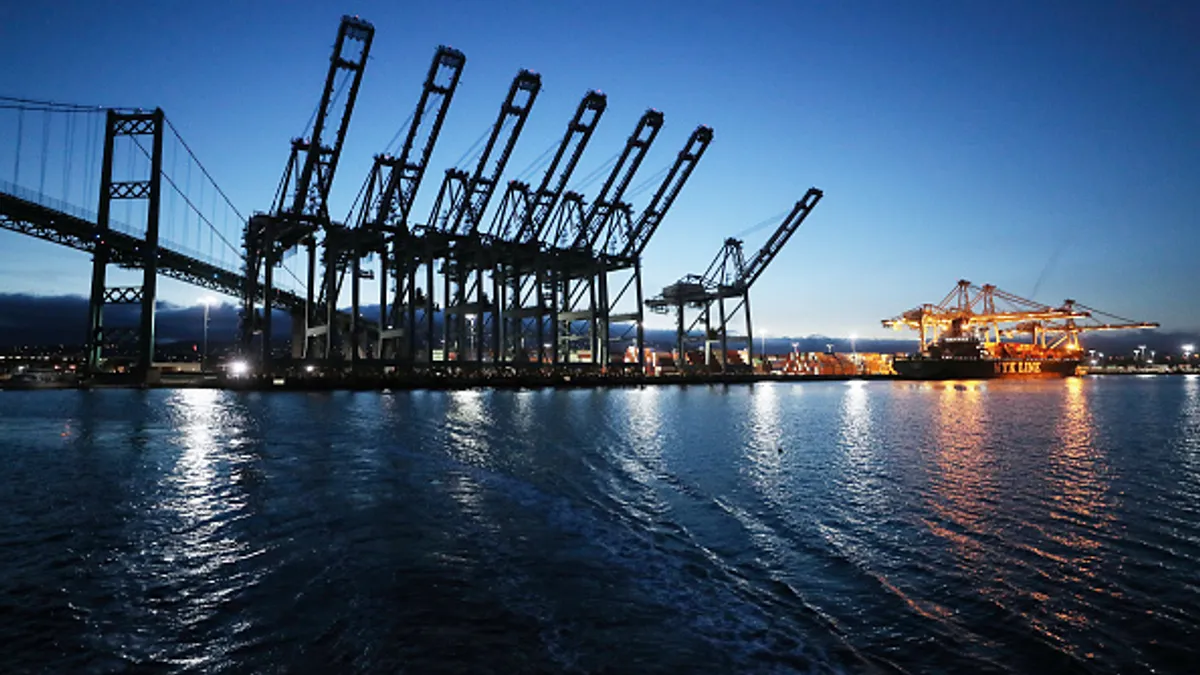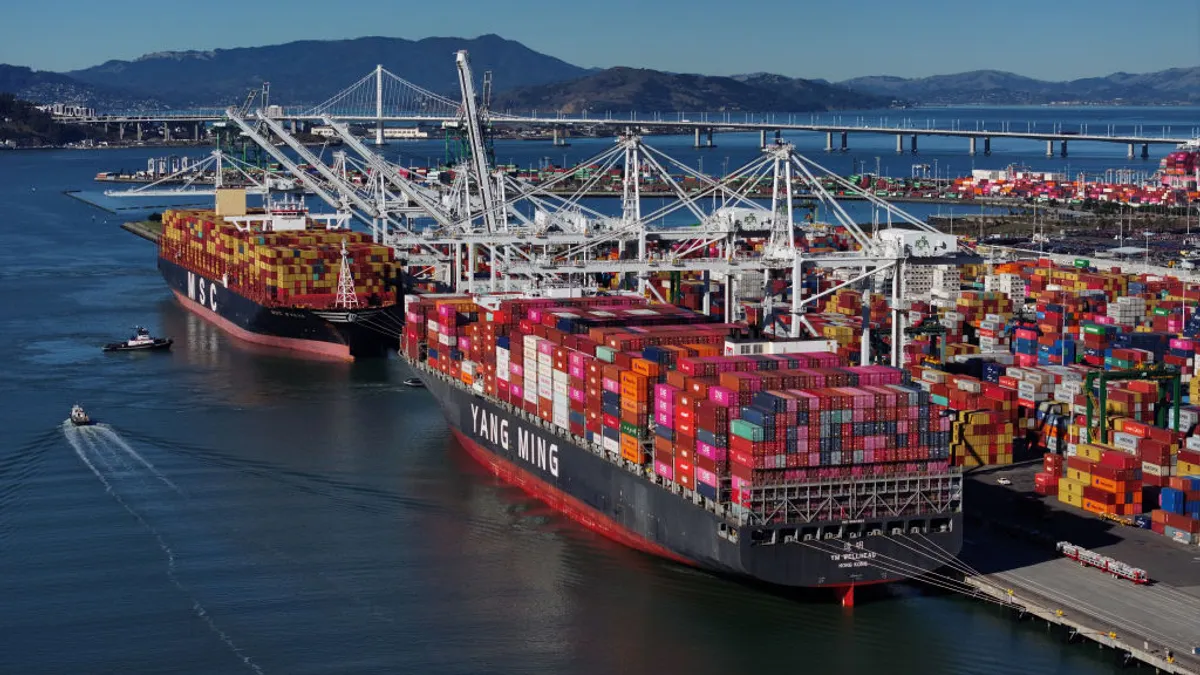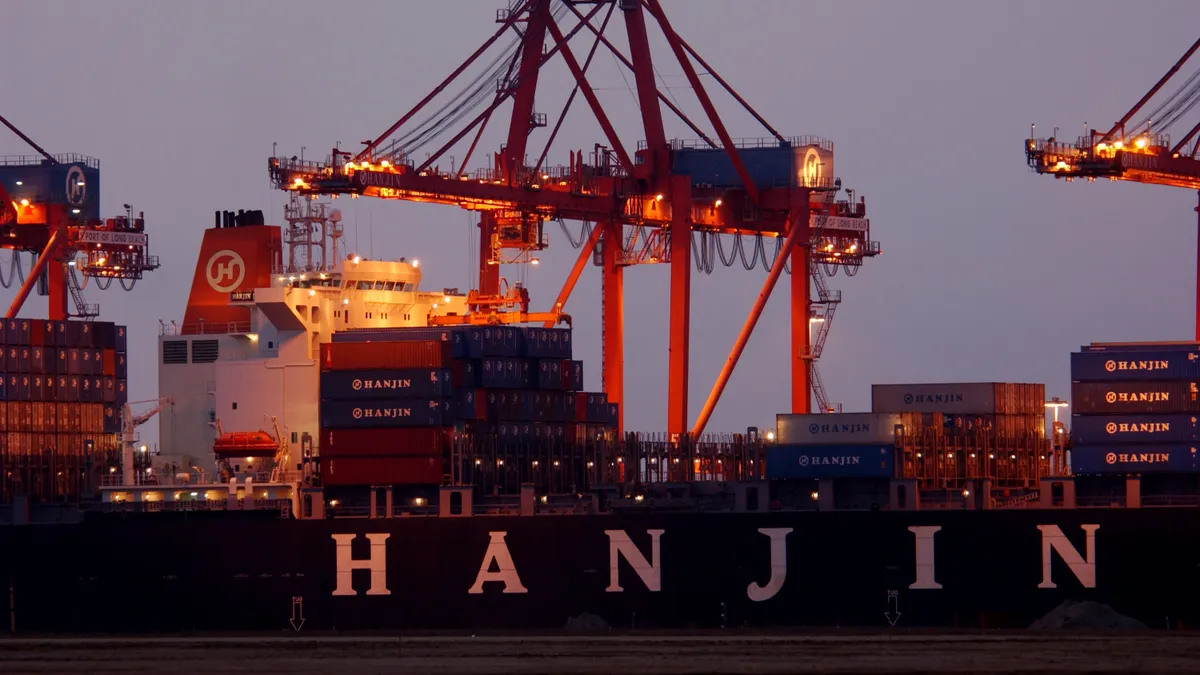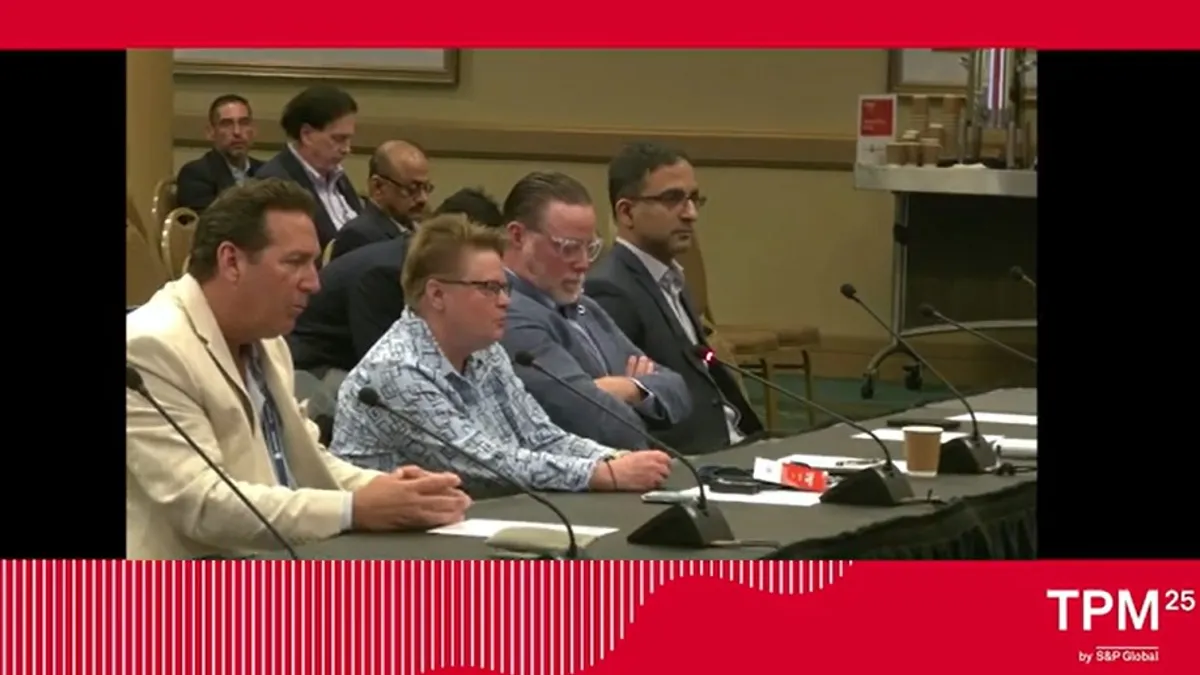"Peak has started," National Retail Federation Vice President for Supply Chain and Customs Policy Jon Gold said Wednesday.
The annual rush to get inventory onto shelves for the busiest retail season of the year is underway. Cargo owners have been dealing with short space in the ocean shipping market for months, so they're bringing in cargo earlier than usual in the hope that it will arrive for peak season.
Anyone hoping for a return to normalcy for the 2021 peak season could be in for a disappointment. Congestion on the West Coast is getting worse, and the deluge of containers is not expected to stop any time soon.
Last week, Port of Los Angeles Executive Director Gene Seroka pointed out that dwell times at container terminals are still near their peak of five days with on-dock rail dwell still hovering around 12 days.
During the first six months of 2020, the monthly average of containers that exceeded 5 days in dwell never went above 4%. But in June that figure was nearly 24% of shipments, according to the latest figures from the Pacific Merchant Shipping Association.
"This is a source of significant concern across the supply chain," Seroka said.
The congestion issues are caused by a flood of containers coming through the gateway. This past June was the busiest June in the 114-year history of The Port of Los Angeles. The port's total container moves reached 876,430 TEUs, which is 15% higher than the previous record set in 2019. And the port hasn't has a slow down in volume to give it a chance to catch its breath.
"This was also the 11th consecutive month of year-on-year increases," Seroka said.
West Coast deals with high container volume
The West Coast is not alone in the volume surge. The South Carolina Ports Authority said fiscal 2021 was its strongest year on record from a volume perspective.
"Our volumes are up. We're handling more volume than we've really ever handled here," South Carolina Ports Authority CEO Jim Newsome said last week.
The Port of Charleston handled 128,622 containers in June, which is up 45% YoY and 14% compared to June 2019.
A 'very strong' H2
Forecasts show that ports aren't likely to get much of a break this year. The Port of Los Angeles forecast shows import volume in the first week of August is expected to be up more than 76% YoY. And the NRF forecast shows volume up YoY in August and September.
"All indications are July and August look super strong. We'll be heading into the traditional peak season and our outlook now using Horizon shows a very strong second half of the year," Seroka said.
July, August volume expected to exceed 2020
And stakeholders are watching this with the knowledge that peak cargo season is right around the corner, if not already underway.
"U.S. imports are up 15% year-to-date already and we see an accelerating trend as we are facing the autumn peak, so to say in a couple of weeks," Kuehne + Nagel CEO Detlef Trefzger said on the company's earnings call this week.
But Trefzger doesn't see any sign of congestion improving for holiday season.
"We believe it could persist perhaps through Lunar New Year," he said. "So, maybe until then, we will not see a major change in the demand and also the bottlenecks in the supply chains globally at the moment mainly caused by port congestion and port inefficiencies."
Shippers and carriers get creative
Seroka underscored that the inefficiencies are happening at multiple supply chain nodes, including rail issues, a shortage of chassis and warehouses full to the brim in the surrounding areas.
"It's not a singular issue that represents what the supply chain looks like today," he said.
Newsome said some cargo owners have begun to get creative to deal with the congestion.
"They're trying everything that they can," he said. "Some shippers are chartering ships... and those are not great ships for containerization typically."
And Gold noted that shippers are moving up their traditional peak-season shipping timeline, trying to ensure that products make it into inventory on time despite congestion.
"I think most experts agree we're going to see that rush and congestion through at least the end of the year, if not the early part of next year," he said.
Seko Logistics advised shippers to book sooner than later for holiday shipments.
"Compared to previous years ... shipments need to be booked up to eight weeks earlier than usual," Seko said in a news release. To arrive in store by Nov. 1, the last ship date is Aug. 21 for Asia to the East Coast, and Sept. 3 for Asia to the West Coast.
J.B. Hunt Intermodal President Darren Field said the firm is working to onboard more equipment in time for peak season that should provide some additional fluidity and capacity for its customers.
But J.B. Hunt's customers are still stressed heading into peak season given the current freight environment, Chief Commercial Officer Shelley Simpson said on a recent earnings call.
"There are several stories from our customers whether it's Christmas product already here in stock ahead of schedule or concern that their peak shipments that are supposed to be on the water aren't on the water yet," Simpson said. "And so, there is a lot of concern coming here into the back half of this year."





















